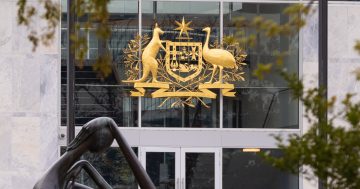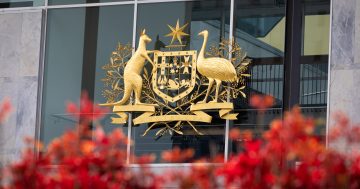On Wednesday 16 August, important new laws were passed in the ACT Legislative Assembly that make it clear that it is a crime to share intimate images of a person without their consent. The Bill was tabled by Jeremy Hanson, and passed with tripartisan support.
Sharing photos with a boyfriend/girlfriend is a common practice in modern Australia, and some of them will be intimate images that the person wants to share only with a specific person. To pass those images on to others without consent, or to use them to embarrass or harass the person in the image, is an act of abuse and causes serious damage.

A 2015 study published by RMIT shows that 1 in 10 Australian adults said that a nude or semi-nude image of them had been sent to others without their permission, and almost the same number said that someone had threatened to post nude or semi-nude images of them online or send them to others. Sometimes those images were originally taken with consent, and shared with consent with the person’s partner, but are subsequently used to harass or humiliate the person by their former partner. This can happen within the context of domestic violence, or by someone who wants to intimidate the person into doing something that the perpetrator wants. In other cases, the images were not taken with consent at all, such as up-skirting or images taken during a sexual assault.
Non-consensual image sharing is something that affects children and young people under 18 years, young women, people with disabilities, and LGBTIQ people, disproportionately. But it can happen to anyone. In the 2015 study, over 70% of the perpetrators of online harassment were people the victim knew and trusted – a friend or family member, sexual partner, or even a work colleague.
Making the law clear on this area is an important first step in changing community attitudes towards intimate images, and reinforces that consent and respect are key aspects of healthy relationships.
These are the things that are now crimes, attracting jail time or heavy fines if a person is convicted:
- Distributing or sharing an intimate image without consent (either knowingly, or because of recklessness about whether the person in the image consented) – up to 3 years in jail or $45,000 fine.
- Threatening to take an intimate image without consent, or distribute or share without consent – up to 3 years in jail or $45,000 fine.
Where the offence relates to a child or young person under 16 years old, the sentence is much higher, as this crosses the line into child exploitation. People under this age are too young to consent, as with other offences relating to sexual relationships and consent.
That means if a person’s face is photoshopped onto an image of a naked body, it’s an intimate image and you can’t make that image or share that.
If a person is getting undressed in a change room at the gym and their photo is taken without asking permission first, that’s an intimate image and you can’t take the photo or share it.
Let’s say you have a new girlfriend or boyfriend who sends you a photo in their underwear – that’s fine, but don’t show it to your friends or upload it to a private Facebook group.
When the relationship ends, any images you have from that person are still not OK to share without consent, or to threaten your ex that you might share them without their consent.
If a person is unconscious, affected by alcohol or drugs, or asleep, they can’t give consent, so put the camera away.
But if you’re adults consenting to share images with each other, that’s fine. Or if you’re both 15 years old and consenting to share images with each other, it’s OK.
For young people aged 14 or over who share their own image with another young person within 2 years of their own age, and who consent to sharing their own image, there is an exception to the law about consent. Again, this is consistent with other laws relating to sexual relationships between young people. The intent is to protect young people from criminal convictions when they are consenting to share images with each other, but to still provide protection if they have not consented to their image being taken or shared by another young person, and to protect them from exploitation by others.
So, what is an intimate image? It is an image of a person’s private parts (including breasts for someone who is female, or transgender or intersex and identifies as female), whether naked or covered by underwear. Intimate images also include a person engaged in a private act, such as undressing, using the toilet or showering, or engaging in sexual activity that would not normally be done in public. It also includes an image that has been altered so that it looks like you can see a person’s private parts, or looks like the person is engaging in a private act.
Now that the law has passed, the next step is making sure that the police and the community understand what these new laws mean, and how to ensure that people who experience intimate image abuse are protected. Education and training was raised by a number of women’s organisations during Caroline Le Couteur’s extensive community consultations on the issue, and with Jeremy Hanson in a meeting earlier this week.
The new laws also include the ability for the court to order images to be taken down or destroyed, with penalties of up to 2 years in jail or a $30,000 fine for failure to comply with the court order. But of course, once it’s on the internet it’s very hard to get rid of it. Better to ensure that everyone has a good understanding of respectful relationships, and where the line is that should never be crossed, to prevent the harm in the first place.
If you have experienced intimate image abuse and want to talk to someone about it, you can contact:
- Canberra Rape Crisis Centre on 6247 2525
- 1800RESPECT on 1800 737 732
- Domestic Violence Crisis Service on 6280 0900
- Victim Support ACT




















